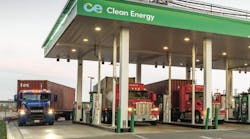Recent economic reports indicate that inflation in check, brisk manufacturing output, and a relatively slow, yet steady increase in consumer spending will carry the trucking industry through good times for the foreseeable future.
August figures for consumer spending dipped 0.3%, however, after weak auto sales put a considerable drag on the economy, the U.S. Census Bureau said. Excluding motor vehicle and parts, consumer spending increased 0.2%.
Motor vehicle and auto sales, which comprises nearly a quarter of total consumer spending, dropped 1.9%, nearly reversing the revised 2.2% surge seen in July. This late-summer lull indicates that consumers are closing their wallets in August after auto retailers piled on the incentives the month earlier.
“Auto sales are going to continue to be volatile,” said Chris Brady, president of Commercial Motor Vehicle Consulting (CMVC). “I’d be nervous if auto sales declined for three to four months in a row because that would indicate a weakening in consumer spending, but that is not the case,” he said, pointing to the strong July figures.
Consumers did less shopping for clothes, furniture, and at general merchandise stores as the categories posted declines of 1.4%, 0.9% and 0.4%, respectively.
Instead of shopping at department stores, consumers turned to nonstore retailers, which saw a 1.7% sales increase, as well as specialty stores that sell sporting goods, hobby goods, books and music, which saw a 1.4% revenue boost. Households kept plenty of food in the pantries after food and beverage stores posted a 0.6% increase in sales.
“I think what it’s pointing to is that the growth rate of consumer spending is slowing,” Brady said. “That’s not too surprising because energy prices are so high and energy expenses are capturing a larger share of household budgets.”
Inflation Under Control
Inflation rose a modest 0.1% in August showing that overall commodity prices are stable, in spite of ballooning energy and healthcare costs, according to a separate report released by the Bureau of Labor Statistics.
Energy prices eased 0.3% in August, following a 1.9% decline in July. Despite the recent lull in energy prices, consumers are still dogged by the earlier price spikes in gasoline. “A modest decline in energy prices isn’t going to be a stimulus for the economy,” Brady said.
However, the decline in other indexes, such as apparel and transportation, has kept inflation in check. “You’re not seeing a real acceleration in consumer prices,” he noted. “The CPI (consumer price index) is signaling that the high energy prices aren’t feeding into the other commodities as a whole. The consumers’ real purchasing power isn’t decreasing.”
Manufacturing Expansion Continues
The manufacturing sector bolstered its output by another 0.5% in August, after a brisk 0.9% increase in July, according to a separate report released by the Federal Reserve.
Consumer goods continue to show strength, as it posted a 0.3% increase. A 1.6% increase in the production of consumer durable goods was driven by a sharp increase in automotive products.
But given the recent figures on automotive sales, such a brisk expansion in manufacturing output is not sustainable, Brady warned. “I would expect auto production in the fourth quarter to be a drag on industrial production. Inventories for dealers are bloated so auto manufacturers will likely cut back production.”
“In general, [automotive] is a relatively large segment for trucking because you are hauling the intermediate supplies and final parts in and out of factories. But overall trucking will expand because while auto shipments might be a bit weak, consumer spending is expanding overall,” he said.
Even a slight increase in demand will give truckers plenty of freight. “It’s [automotive] not going to cause a downturn in shipment volumes. Right now freight volumes still appear to be expanding. I do expect growth rate [in freight] to moderate a bit. However, with carrier capacity tight even moderate growth in shipment volumes will sustain freight volumes,” Brady said.




